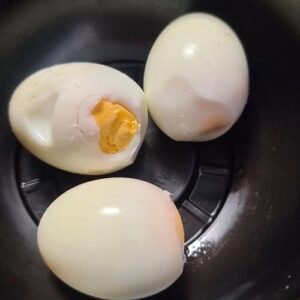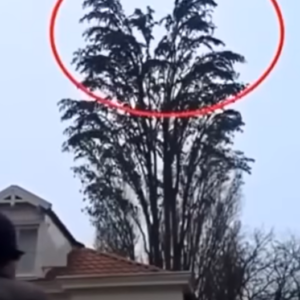Introduction
In an unprecedented development for the Catholic Church, Cardinal Robert Francis Prevost of Chicago was elected on May 8, 2025, as Pope Leo XIV, becoming the first American to occupy the papal throne. Almost immediately after the white smoke billowed from the Sistine Chapel’s chimney, marking the conclusion of the conclave, former President Donald Trump offered his congratulations via Truth Social, hailing the election as “a Great Honor for our Country.”
However, in the days since Pope Leo XIV’s elevation, a series of his past social-media posts—originally shared under his birth name—has resurfaced, casting fresh light on his attitudes toward key American political figures and policies. Among these are pointed critiques of immigration enforcement measures and of comments by Vice President J.D. Vance. Now, as President Trump prepares to meet the new pontiff, many observers are asking: How will Pope Leo XIV’s previously expressed views shape his relationship with the U.S. administration?
This in-depth, web-optimized report examines:
The Resurfaced Posts: A detailed look at the pope’s Twitter history and the specific policy critiques he shared.
Context and Timing: Why these posts are gaining attention now, and how they relate to Trump’s recent public statements.
Papal Social Media: The evolving role of personal commentary by high-ranking prelates in the digital age.
Policy Implications: What Pope Leo XIV’s positions might signal regarding immigration, family separation, and broader social-justice priorities.
Historical Precedents: How past popes have navigated political controversies.
Reactions and Analysis: Responses from Vatican insiders, U.S. Catholic leaders, and political commentators.
Looking Ahead: Potential impacts on Vatican-U.S. relations and the new pope’s first actions in office.
1. The Resurfaced Posts: Key Examples
1.1 Critique of Forced Deportations
One of the most widely circulated posts dates to late 2023, when then-Cardinal Prevost reshared a tweet criticizing the “illicit deportation of a U.S. resident”—a reference to the high-profile case of a writer with Salvadoran roots. The tweet read:
“As Trump & Bukele use Oval to Feds’ illicit deportation of a US resident, once an undoc-ed Salvadorean himself, now-DC Aux +Evelio asks, ‘Do you not see the suffering? Is your conscience not disturbed? How can you stay quiet?’”
By amplifying this message, Prevost signaled solidarity with immigrants facing sudden removal proceedings, questioning the moral calculus of such policies.
1.2 Strong Language on Family Separation
In another widely shared post, Prevost declared:
“There is nothing remotely Christian, American, or morally defensible about a policy that takes children away from their parents and warehouses them in cages. This is being carried out in our name and the shame is on us all.”
This rebuke of family-separation practices struck at the heart of one of the most contentious elements of U.S. immigration enforcement, framing it as antithetical to both religious values and the national ethos.
1.3 Reproving Vice President J.D. Vance
Beyond executive-branch policies, Prevost also weighed in on commentary by then-Vice President J.D. Vance. In February 2025, Vance told Fox News that Christians should prioritize love for family, then community, then nation, and finally the world—an ordering he attributed to some church teachings. Prevost responded by resharing an op-ed from National Catholic Reporter titled “JD Vance is wrong: Jesus doesn’t ask us to rank our love for others.” The op-ed argued for the universal scope of Christian charity, rejecting any hierarchy of concern.
2. Context and Timing: Why Now?
2.1 Pope Francis’s Passing and the Conclave
The death of Pope Francis on April 21, 2025, set in motion the Church’s ancient procedures: nine days of mourning followed by the conclave beginning on May 7. Just 24 hours later, Prevost’s election was secured—a testament to the cardinals’ urgency in naming a successor.
In that fevered atmosphere, social-media archives naturally came under scrutiny. Catholic news outlets, bloggers, and the Vatican’s own press office began cataloging notable statements from the newly named pope’s past, including those already controversial among American conservatives.
2.2 Trump’s Immediate Response
Within hours of the white smoke’s appearance, Donald Trump posted on Truth Social:
“Congratulations to Cardinal Robert Francis Prevost, who was just named Pope. It is such an honor to realize that he is the first American Pope. What excitement, and what a Great Honor for our Country. I look forward to meeting Pope Leo XIV.”
That effusive praise, juxtaposed with the resurfaced critiques, has sparked questions about whether the new pontiff’s policy stances will temper or test the relationship between the Vatican and the Trump-aligned segments of U.S. politics.
3. Papal Social Media: A New Frontier
3.1 From Vatican Dispatches to Personal Commentary
Historically, popes and cardinals relied on official Vatican communication channels—press releases, encyclicals, and speeches—to convey positions. Personal social-media posts, especially before a cleric becomes pope, were rare. Yet in today’s digital landscape, many prelates maintain individual Twitter accounts to engage with current events and pastoral concerns directly.
3.2 Risks and Rewards
Reach and Engagement: Posts can instantly reach millions, shaping public perceptions of Church priorities.
Potential for Misinterpretation: Sound-bite culture risks oversimplifying nuanced theological positions.
Historical Record: Once posted, remarks cannot be fully erased; they become part of the permanent digital archive.
For Cardinal Prevost, these risks have materialized in the form of revived criticism just as he ascends to the highest office in the Church.
4. Policy Implications: Reading the Signals
4.1 Immigration and Human Dignity
Pope Leo XIV’s earlier language on deportations and family separation aligns closely with long-standing Catholic teaching on the dignity of migrants and refugees. His public insistence that such policies are “morally indefensible” suggests that his pontificate may:
Advocate for more compassionate border-control measures.
Call on Catholic institutions to expand legal-aid and humanitarian support for migrants.
Engage directly with U.S. and Latin American leaders to address root causes of displacement.
4.2 The Universal Call to Love
By challenging J.D. Vance’s hierarchical ordering of love, the new pope reinforces the theological principle that Christian charity is boundless. This perspective could translate into:
Renewed emphasis on global solidarity, particularly with the poorest nations.
Vatican support for initiatives combating global health crises, climate change, and economic inequality.
Diplomatic efforts that place the Church alongside international Muslim, Jewish, and secular humanitarian organizations.
5. Historical Precedents: When Popes Entered Political Debate
5.1 Pope Leo XIII and Rerum Novarum
In 1891, Pope Leo XIII’s encyclical Rerum Novarum took a firm stand on labor rights and the responsibilities of governments and employers—directly engaging with the political economy of the Industrial Revolution. His prudent but forceful advocacy shaped social-justice discourse for generations.
5.2 Pope John Paul II and Solidarity
During the 1980s, Pope John Paul II became a global figure of political resistance, notably supporting the Solidarity movement in Poland. While primarily pastoral, his public interventions had palpable geopolitical effects.
5.3 Pope Francis and the Global South
Pope Francis frequently addressed political topics—from climate change to economic migration—blurring the lines between theological exhortation and policy advocacy. His outspoken critique of inequality set a new precedent for papal engagement.
Pope Leo XIV appears poised to follow this lineage, combining doctrinal depth with pointed commentary on specific policies.
6. Reactions and Analysis
6.1 Vatican Insiders
Several unnamed aides in the Vatican Secretariat of State have expressed cautious optimism. One senior official noted:
“The new pope’s prior statements reflect a deep pastoral concern for the vulnerable. While they may ruffle feathers in Washington, they are consistent with the Church’s social-teaching tradition.”
6.2 U.S. Catholic Leaders
American Bishops’ Conference: Issued a statement welcoming Pope Leo XIV and affirming their commitment to carry forward his emphasis on immigrant dignity.
Conservative Catholic Commentators: Some have voiced surprise, suggesting the pope’s past posts may complicate U.S. Church-State relations.
Catholic Advocacy Groups: Organizations like Catholic Charities and Jesuit Refugee Service heralded the new pope’s positions as catalytic for expanded ministry to migrants.
6.3 Political Commentators
Right-wing Pundits: Questioned whether Trump’s meeting with Pope Leo XIV will include discussions on shifting immigration stances.
Center-left Analysts: Suggested the pope’s social-media history gives the Biden administration common ground for policy collaboration on refugee admissions and humanitarian aid.
7. Looking Ahead: The Early Pontificate
7.1 The Inaugural Homily
Scheduled for May 20, 2025, Pope Leo XIV’s first official Mass at St. Peter’s Basilica is expected to reiterate themes from his Twitter posts:
A preferential option for migrants
Unconditional love and global solidarity
A call for conscience-driven policymaking
Observers will be watching closely for any direct references to U.S. political debates.
7.2 Diplomatic Engagement
In his initial months, Pope Leo XIV may:
Invite U.S. immigration officials to Vatican-sponsored conferences on migration ethics.
Dispatch special envoys to conflict zones to advocate for displaced populations.
Meet with President Biden and attend sessions at the United Nations in New York.
7.3 Curial Appointments
By selecting key advisors and Vatican department heads who share his social-justice priorities, the new pope can institutionalize his stance on immigration and human rights.





